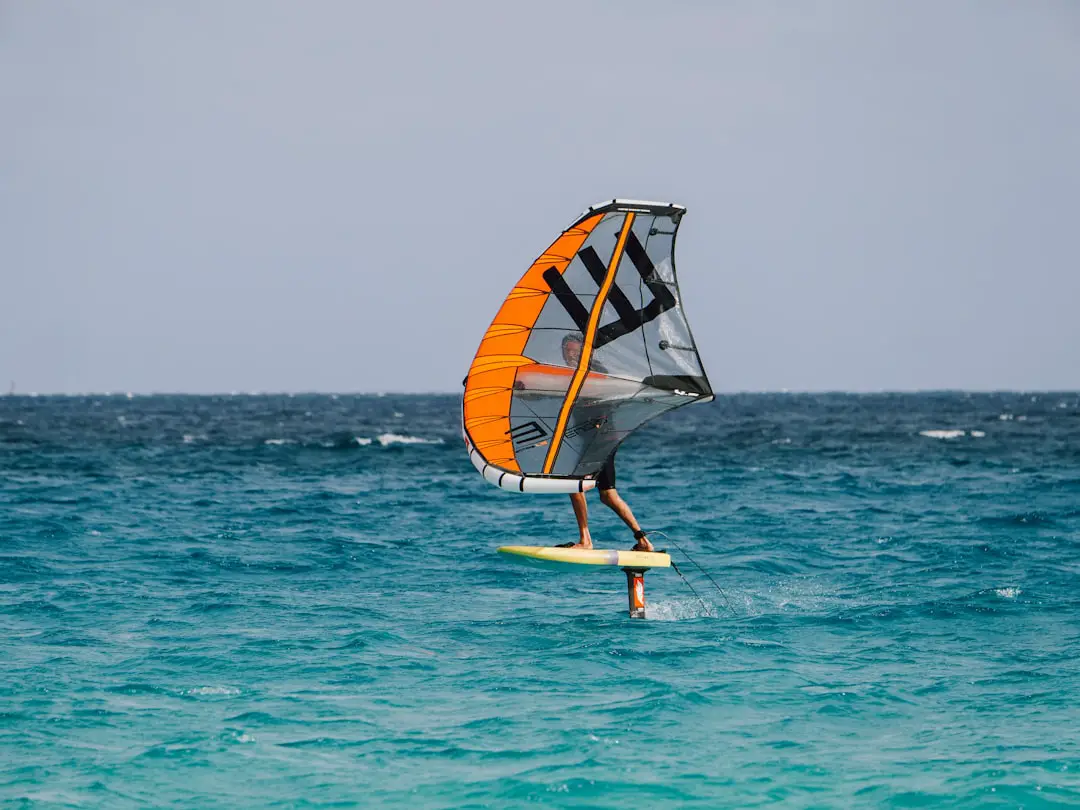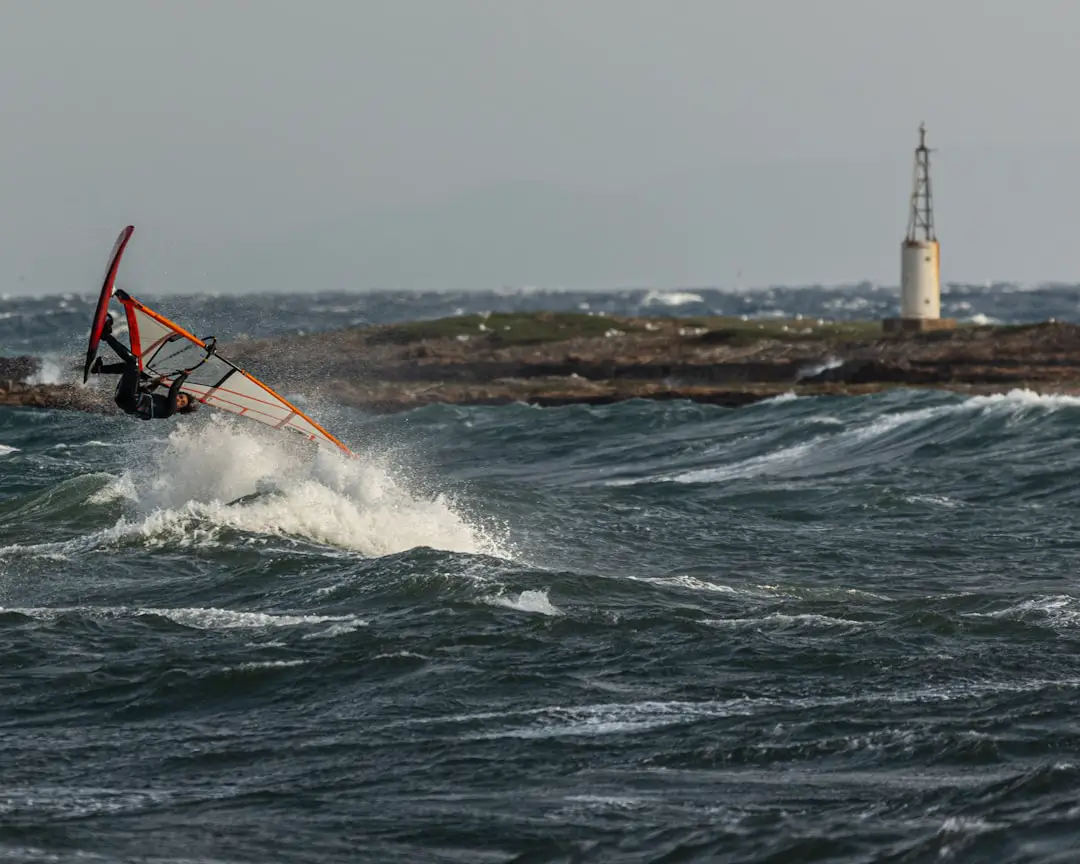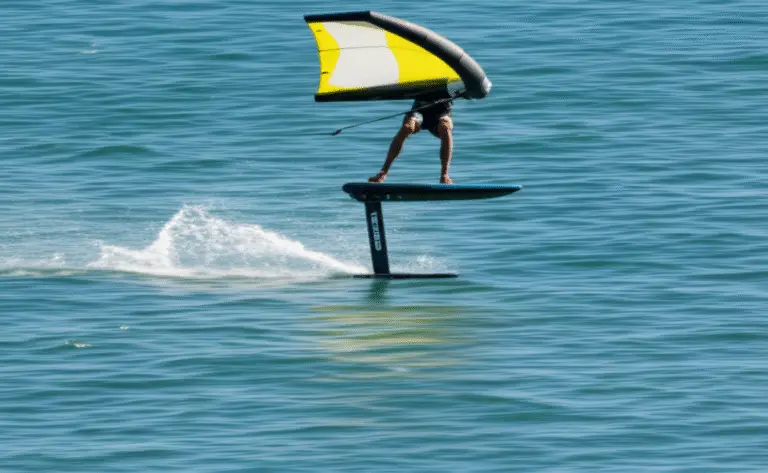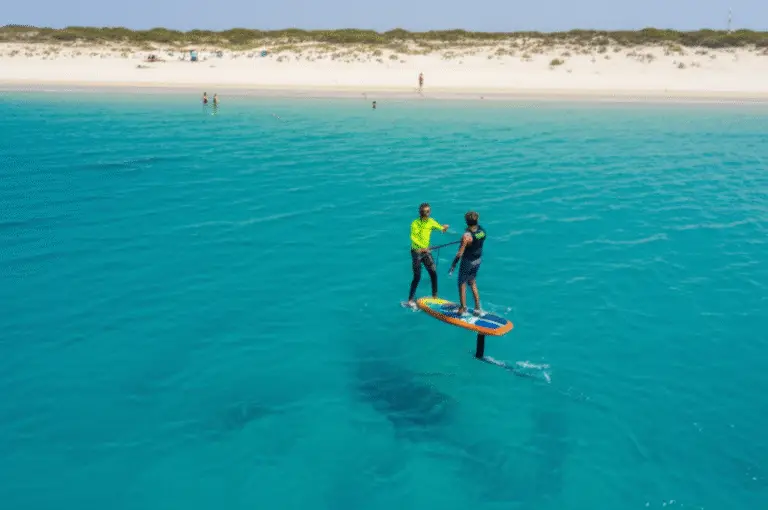Support our hydrofoil educational content for free when you purchase through links on our site. Learn more
Hydrofoil Windsurfing vs Regular Windsurfing: 7 Key Differences (2025) 🌊

Ever wondered why hydrofoil windsurfing feels like flying on water while regular windsurfing keeps you skimming the surface? We’ve been riding both at Hydrofoiling™ and trust us—once you experience the thrill of hydrofoiling, it’s hard to go back. But is it really better for everyone? And what exactly sets these two styles apart beyond just the gear?
In this deep dive, we unpack 7 crucial differences between hydrofoil windsurfing and traditional windsurfing—from equipment and speed to learning curve and ideal conditions. Whether you’re a curious beginner or a seasoned sailor thinking about upgrading your ride, we’ll help you navigate the pros, cons, and everything in between. Plus, we’ll share insider tips on gear setup and safety to get you flying confidently.
Ready to discover which style suits your vibe and how to get started? Let’s jump in and explore the future of wind-powered fun!
Key Takeaways
- Hydrofoil windsurfing lifts you above water, reducing drag and allowing rides in lighter winds (as low as 6 knots) compared to regular windsurfing.
- Equipment differs significantly: hydrofoil boards are shorter and wider with specialized foils, while regular boards are longer and rely on fins.
- Learning curve is steeper for hydrofoiling, requiring more balance and finesse, but rewards with higher speeds and a unique flying sensation.
- Hydrofoiling works well in varied conditions, including light winds and waves, expanding your ride options.
- Investment in hydrofoil gear is higher, but brands like RRD, Duotone, and TAHE offer reliable options for all skill levels.
- For beginners, starting with regular windsurfing before transitioning to foiling is often recommended.
👉 Shop top hydrofoil windsurfing gear:
Table of Contents
- ⚡️ Quick Tips and Facts
- 🌊 The Evolution of Windsurfing: From Planing to Foiling
- The Ultimate Showdown: Hydrofoil Windsurfing vs. Regular Windsurfing
- 1. 💨 The Fundamental Ride: Air vs. Water
- 2. ⚙️ Equipment Deep Dive: Boards, Foils, and Fins
- 3. 🌬️ Wind Range and Conditions: Catching the Breeze
- 4. 🚀 Speed and Performance: Gliding vs. Flying
- 5. 🤸 Learning Curve and Skill Set: From Beginner to Pro
- 6. 📍 Location, Location, Location: Where to Ride
- 7. 💰 The Investment: Gear Up for Fun
- 🤔 Is Windsurfing Foiling Hard? Unpacking the Challenge
- 🛠️ Setting Up Your Windfoil Gear: Tips from the Pros
- Safety First: Navigating the Waters Responsibly
- Wing Foiling vs. Wind Foiling: A Family Affair?
- The Future of Wind Sports: What’s Next?
- Conclusion: Choosing Your Ride
- Recommended Links
- FAQ: Your Burning Questions Answered
- Reference Links
Quick Tips and Facts
To get started with hydrofoil windsurfing, it’s essential to understand the basics. Check out our article on hydrofoil windsurfing for a comprehensive guide. Here are some key points to consider:
- Hydrofoil boards are shorter and wider than traditional windsurfing boards, making them more suitable for foiling.
- Sail size is crucial, with smaller sails (3.0 to 5.0 m²) used for strong winds and experienced riders, and larger sails (6.0 m² and above) used for light winds and beginners.
- Harness and lines play a critical role in distributing the sail’s force to the body, with Downhaul, Outhaul, and Harness Lines controlling the sail.
- Wind range and conditions are vital, with hydrofoil windsurfing suitable for winds as low as 6 knots.
Key Equipment Components
The following components are essential for hydrofoil windsurfing:
- Hydrofoil: Consists of a mast, fuselage, front wing, rear wing, and mast base. Materials include aluminum, carbon, glass fiber, and G-10.
- Windsurfing board: Shorter and wider boards are best, with brands like RRD, JP, Slingshot, Starboard, and Bic (now Tahe) offering a range of options.
- Sail: Smaller sails are typically used, with sizes ranging from 3.0 to 5.0 m² for strong winds and experienced riders.
The Evolution of Windsurfing: From Planing to Foiling
The evolution of windsurfing has led to the development of hydrofoil windsurfing, which offers a unique flying sensation. According to Unity Surf, “Once the hydrofoil is engaged, the board hovers above the water’s surface, and the sensation is akin to flying on air and water simultaneously.” This new dimension of windsurfing has opened up new possibilities for riders, with the ability to glide above the water’s surface and experience a sense of weightlessness.
History of Hydrofoil Windsurfing
The concept of hydrofoil windsurfing has been around for several decades, but it wasn’t until recent years that the technology has advanced to make it accessible to a wider range of riders. With the development of more efficient and user-friendly equipment, hydrofoil windsurfing has become a popular discipline within the windsurfing community.
The Ultimate Showdown: Hydrofoil Windsurfing vs. Regular Windsurfing
So, what’s the difference between hydrofoil windsurfing and regular windsurfing? Here are some key points to consider:
1. The Fundamental Ride: Air vs. Water
Hydrofoil windsurfing offers a unique flying sensation, with the board hovering above the water’s surface. In contrast, regular windsurfing involves planing on the water’s surface.
2. Equipment Deep Dive: Boards, Foils, and Fins
Hydrofoil windsurfing requires specialized equipment, including shorter and wider boards, hydrofoils, and smaller sails. Regular windsurfing, on the other hand, uses traditional boards and sails.
3. Wind Range and Conditions: Catching the Breeze
Hydrofoil windsurfing is suitable for winds as low as 6 knots, while regular windsurfing typically requires stronger winds.
4. Speed and Performance: Gliding vs. Flying
Hydrofoil windsurfing offers a faster and more efficient ride, with the ability to glide above the water’s surface. Regular windsurfing, on the other hand, involves planing on the water’s surface.
5. Learning Curve and Skill Set: From Beginner to Pro
Hydrofoil windsurfing can be challenging for beginners, requiring dedication and practice to master. Regular windsurfing, on the other hand, is more accessible to beginners.
6. Location, Location, Location: Where to Ride
Hydrofoil windsurfing can be done in a variety of locations, including flat water and waves. Regular windsurfing is often limited to flat water and stronger winds.
7. The Investment: Gear Up for Fun
Hydrofoil windsurfing requires a significant investment in specialized equipment, including boards, hydrofoils, and sails. Regular windsurfing, on the other hand, is more affordable, with a wider range of equipment options available.
Is Windsurfing Foiling Hard? Unpacking the Challenge
Windsurfing foiling can be challenging, especially for beginners. According to Mario Kuempel’s YouTube Channel, windsurfing requires a combination of skill, practice, and patience. However, with the right equipment and instruction, anyone can learn to windsurf foil.
Tips for Learning Windsurfing Foiling
Here are some tips for learning windsurfing foiling:
- Start with a shorter and wider board, which is more stable and easier to maneuver.
- Use a smaller sail, which is more forgiving and easier to control.
- Practice in light winds, which are more suitable for beginners.
- Take lessons from a qualified instructor, who can provide personalized feedback and guidance.
Setting Up Your Windfoil Gear: Tips from the Pros
Setting up your windfoil gear can be a daunting task, especially for beginners. Here are some tips from the pros:
- Choose the right board: Select a board that is specifically designed for windfoiling, with a shorter and wider shape.
- Select the right sail: Choose a sail that is suitable for windfoiling, with a smaller size and a more forgiving design.
- Adjust the foil: Adjust the foil to the correct angle and height, depending on the wind conditions and your riding style.
Safety First: Navigating the Waters Responsibly
Safety should always be the top priority when windsurfing, especially when foiling. Here are some tips for navigating the waters responsibly:
- Wear a helmet and other protective gear, such as a life jacket and booties.
- Check the weather forecast and wind conditions before heading out.
- Respect other water users, such as swimmers, surfers, and boats.
Wing Foiling vs. Wind Foiling: A Family Affair?
Wing foiling and wind foiling are two related but distinct disciplines. Wing foiling involves using a hand-held wing on a SUP or foil board, while wind foiling involves using a sail on a windsurfing board. Both disciplines offer a unique and exciting way to experience the water, with a focus on speed, agility, and fun.
Key Differences Between Wing Foiling and Wind Foiling
Here are some key differences between wing foiling and wind foiling:
- Equipment: Wing foiling uses a hand-held wing, while wind foiling uses a sail.
- Riding style: Wing foiling involves a more upright riding position, while wind foiling involves a more laid-back position.
- Wind conditions: Wing foiling is suitable for lighter winds, while wind foiling is suitable for stronger winds.
The Future of Wind Sports: What’s Next?
The future of wind sports is exciting and rapidly evolving, with new technologies and innovations emerging all the time. From hydrofoil windsurfing to wing foiling, there are many ways to experience the thrill of wind-powered sports. Whether you’re a seasoned pro or a beginner, there’s never been a better time to get involved and see what the future holds.
Emerging Trends in Wind Sports
Here are some emerging trends in wind sports:
- Sustainable equipment: Many manufacturers are now focusing on sustainable and eco-friendly equipment, such as boards made from recycled materials.
- Innovative designs: New and innovative designs are emerging all the time, such as inflatable windsurfing boards and modular foils.
- Increased accessibility: Wind sports are becoming more accessible to a wider range of people, with rental options and lessons available for beginners.
CHECK PRICE on:
- Amazon | Walmart | RRD Official Website for RRD Firemove E-Tech Y27
- Amazon | Walmart | Duotone Official Website for 2025 Duotone Stingray Wind Foil Board
- Amazon | Walmart | TAHE Official Website for TAHE Techno Wind Foil Board 160
For more information on hydrofoil windsurfing and wind foiling, check out our Hydrofoil Basics and Hydrofoil Equipment Reviews sections.
Conclusion: Choosing Your Ride
After diving deep into the world of hydrofoil windsurfing versus regular windsurfing, it’s clear that both have their unique thrills and challenges. Hydrofoil windsurfing offers that magical sensation of flying above the water, unlocking new wind ranges and speeds that traditional windsurfing just can’t match. However, it comes with a steeper learning curve and requires specialized gear like shorter, wider boards and carbon or aluminum hydrofoils.
On the flip side, regular windsurfing remains the classic, accessible, and versatile choice — perfect for beginners and those who love the tactile feel of planing on the water’s surface. It’s also generally more affordable and easier to find gear for.
If you’re craving that futuristic flying feeling and ready to invest time and effort, hydrofoil windsurfing is absolutely worth it. Brands like RRD, Duotone, and TAHE offer excellent boards and foils that cater to different skill levels and budgets. Just remember: patience and practice are your best friends here.
For those still on the fence, why not try both? Many riders start with regular windsurfing and transition to foiling once they’ve mastered the basics. Either way, the water is waiting — and the wind is calling. 🌬️🌊
Recommended Links
Ready to gear up? Here are some top picks and trusted sources to get you started:
-
RRD Firemove E-Tech Y27 Windfoil Board:
Amazon | Walmart | RRD Official Website -
2025 Duotone Stingray Wind Foil Board:
Amazon | Walmart | Duotone Official Website -
TAHE Techno Wind Foil Board 160:
Amazon | Walmart | TAHE Official Website -
Books to Deepen Your Knowledge:
“Windsurfing: The Essential Guide” by Robby Swift — Amazon Link
“Hydrofoiling: The Complete Guide” by Hydrofoiling™ Team — Amazon Link
FAQ: Your Burning Questions Answered

What are the benefits of using a hydrofoil in windsurfing compared to traditional fins?
Hydrofoils lift the board above the water, drastically reducing drag and allowing you to sail in lighter winds (as low as 6 knots). This means you can extend your session days and enjoy smoother rides over chop and waves. Unlike traditional fins that keep you planing on the water surface, hydrofoils give you that exhilarating sensation of flying, increasing speed and efficiency. However, this comes with a need for precise balance and control.
How does the learning curve for hydrofoil windsurfing differ from regular windsurfing?
Hydrofoil windsurfing has a steeper learning curve. Beginners often struggle with balance and controlling the foil’s lift, which requires more finesse compared to regular windsurfing. You’ll need to develop a strong understanding of wind dynamics and board control. That said, with proper lessons and patience, many riders progress quickly. Regular windsurfing is generally easier to pick up and more forgiving, making it ideal for newcomers.
Tips for easing the learning curve:
- Start on a stable, wider foil board.
- Practice in light winds.
- Take professional lessons focused on foiling techniques.
Read more about “Discover the Thrill of Hydrofoil Windsurfing: 10 Essential Insights for 2025! 🌊”
What kind of conditions are best suited for hydrofoil windsurfing, and how do they differ from ideal regular windsurfing conditions?
Hydrofoil windsurfing thrives in lighter winds (6-15 knots), flat water, and moderate chop. The foil’s lift allows you to glide effortlessly even when the wind isn’t strong enough for regular planing. Regular windsurfing, however, needs stronger winds (usually 12+ knots) and flatter water for optimal planing and control.
If you live in an area with inconsistent or light winds, hydrofoil windsurfing can significantly extend your ride time.
Are hydrofoil windsurfing boards more expensive than regular windsurfing boards, and what factors affect their price?
✅ Hydrofoil boards typically cost more due to the advanced materials (carbon fiber, high-grade aluminum) and complex manufacturing processes involved in making the foils and boards lightweight yet durable. The foil itself is a significant cost factor, often priced separately from the board.
Factors affecting price include:
- Material quality: Full carbon foils and boards cost more than aluminum or fiberglass options.
- Brand reputation: Premium brands like RRD and Duotone command higher prices.
- Technology: Adjustable foils, modular designs, and advanced hydrodynamics add to costs.
- Board size and design: Specialized shapes for foiling can be pricier than standard boards.
Regular windsurfing boards are generally more affordable and widely available, making them a budget-friendly choice for beginners.
Can hydrofoil windsurfing be done in waves, or is it only for flat water?
Hydrofoil windsurfing can absolutely be done in waves! In fact, many riders love the combination of foiling and wave riding for the smooth, gliding sensation over swell. However, it requires more skill and control than flat-water foiling. The foil helps absorb wave energy, making for a smoother ride, but you’ll need to be comfortable with rapid adjustments and balance.
Read more about “How Does Hydrofoil Sailing Work? 🌊 Unlocking the Secrets of Flight on Water (2025)”
How do I maintain and care for my hydrofoil windsurfing gear?
Proper maintenance extends the life of your gear and keeps you safe:
- Rinse all components with fresh water after use to remove salt and debris.
- Regularly inspect the foil for cracks or damage, especially the mast and wings.
- Tighten all screws and bolts before each session.
- Store your gear in a cool, dry place away from direct sunlight.
- Use protective covers for transport.
Read more about “Hydrofoil Surfing Unleashed: 10 Must-Know Tips & Top Gear (2025) 🌊”
Reference Links
- Unity Surf on Hydrofoil Windsurfing: https://www.unitysurf.com/hydrofoil-windsurfing/
- Mario Kuempel YouTube Channel: https://www.youtube.com/@MarioKuempel
- Isthmus Sailboards Windfoil Boards: https://isthmussailboards.com/windsurf-boards-and-more/windfoil-boards.html
- RRD Official Website: https://www.rrd.com/locations
- Duotone Official Website: https://www.duotonesports.com/
- TAHE Official Website: https://www.taheoutdoors.com/
- Windsurfing Basics and Hydrofoil Equipment Reviews on Hydrofoiling™:
Hydrofoil Basics | Hydrofoil Equipment Reviews





